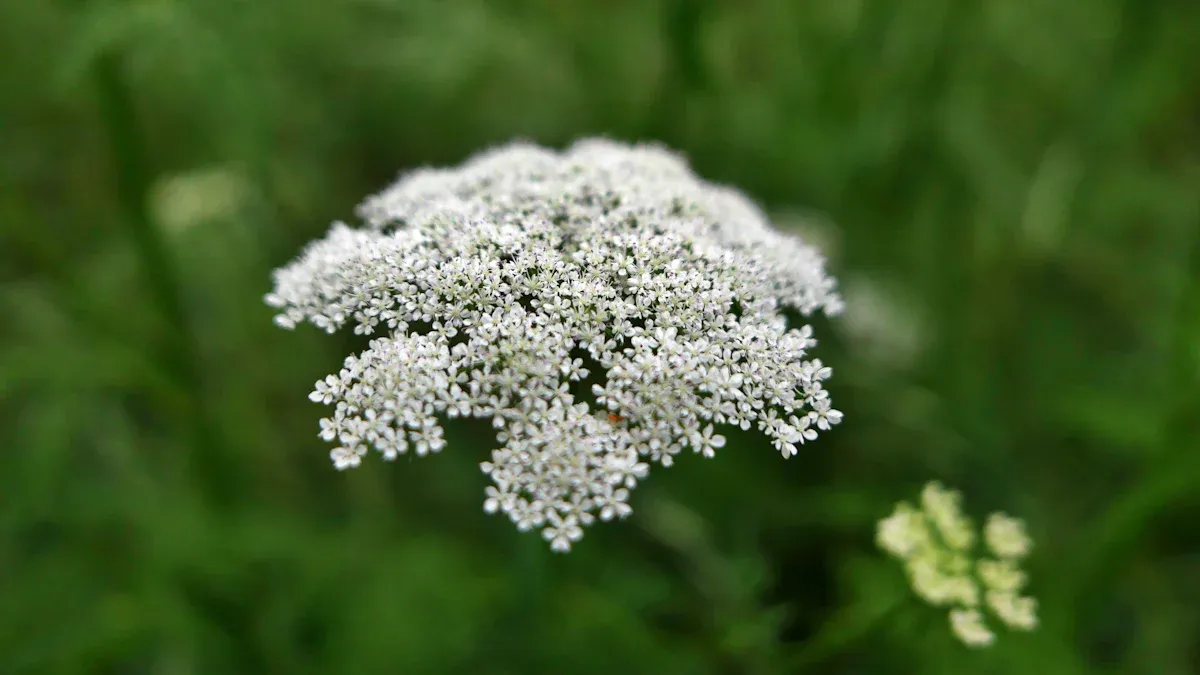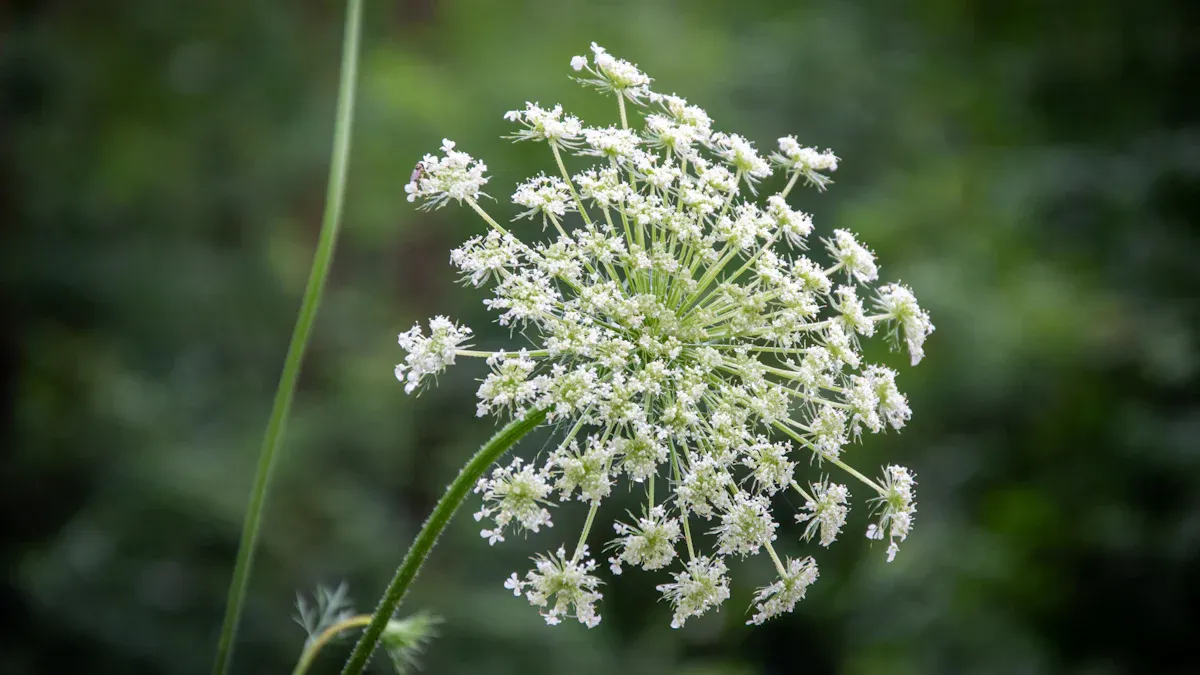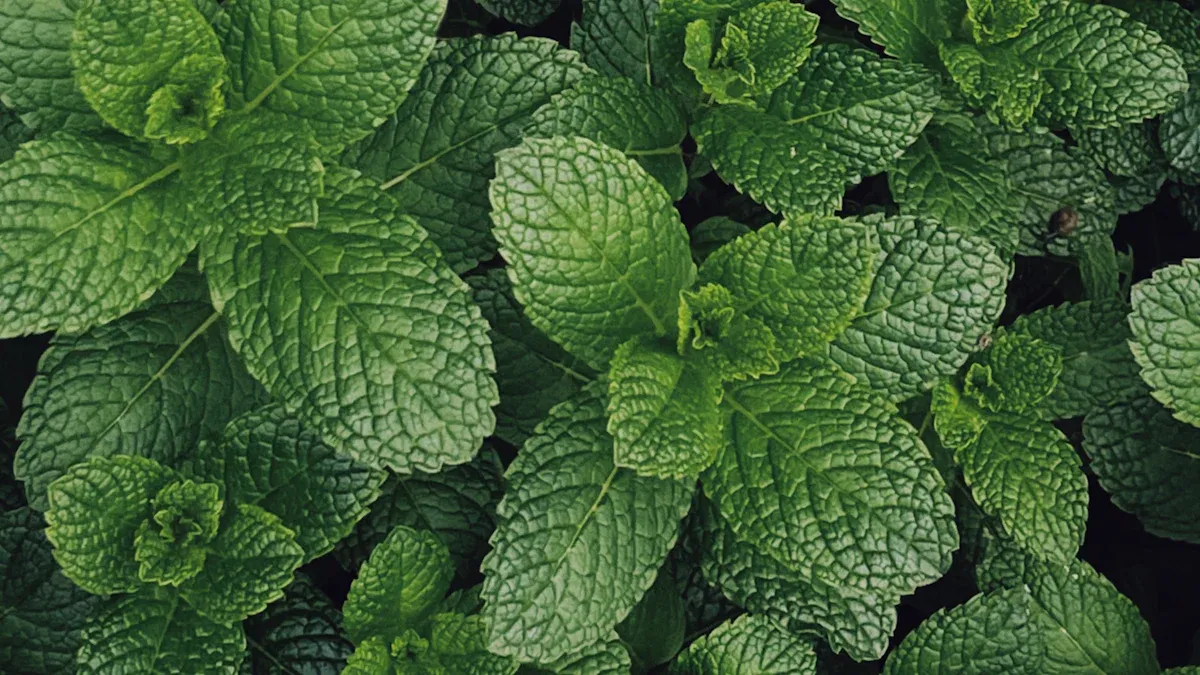
Dropwort, scientifically known as Filipendula vulgaris, belongs to the Rosaceae family. This unique plant features delicate fern-like leaves and clusters of small, white flowers that bloom in summer. You may find it interesting that dropwort has a history of use in traditional medicine, particularly for its anti-inflammatory properties. However, be cautious; some species, like Hemlock Water Dropwort, are highly toxic. A comprehensive guide to understanding these distinctions is crucial for any gardener or herbalist.
Key Takeaways
Dropwort, or Filipendula vulgaris, features delicate fern-like leaves and clusters of creamy white flowers, making it a beautiful addition to any garden.
This plant has a history of traditional medicinal uses, particularly for treating kidney issues and respiratory ailments, showcasing its value beyond aesthetics.
Be cautious of Hemlock Water Dropwort, a toxic species that resembles dropwort; knowing the differences is crucial for safety.
Dropwort thrives in well-drained, moist soil and prefers full sun to partial shade, making it adaptable to various garden settings.
Growing dropwort can attract pollinators like bees and butterflies, enhancing your garden’s ecological health while providing visual appeal.
Dropwort Characteristics

Unique Features
Dropwort, or Filipendula vulgaris, showcases several distinctive characteristics that set it apart from other plants in the Rosaceae family. This perennial plant typically reaches a height of about 24 inches, with some specimens growing up to 32 inches when in bloom. Its delicate fern-like leaves create a lush appearance, making it a popular choice for gardens.
The plant produces clusters of small white flowers that bloom during the summer months. These flowers form delicate panicles, adding a touch of elegance to any landscape. You may find these blooms particularly appealing as they attract various pollinators, including bees and butterflies.
Did You Know?
Dropwort has a long history in traditional medicine. People have used it for its anti-inflammatory properties, treating various ailments. Here are some common uses:
Folk medicine in countries like Serbia, Poland, Russia, and Romania.
Powdered roots for kidney issues, breathlessness, and stomachaches.
Flowers for rheumatism and as a diuretic.
The anti-inflammatory effects of dropwort stem from active compounds found in the plant. For instance, isorhamnetin inhibits the secretion of pro-inflammatory cytokines, while hyperoside interrupts inflammasome activation. The table below summarizes these effects:
Active Compound | Effect on Inflammasome | Impact on Cytokines |
|---|---|---|
Isorhamnetin | Inhibits IL-1β, IL-18, and caspase-1 secretion mediated by NLRP3 and AIM2 inflammasome | Down-regulates pro-inflammatory cytokines |
Hyperoside | Interrupts NLRC4 and AIM2 inflammasome activation | No alteration in cytokine expression |
While exploring dropwort, it’s essential to recognize the differences between its species. One notable species is Hemlock Water Dropwort (Oenanthe crocata), which is highly toxic. You can identify this plant by its celery-like stalks and leaves, which may resemble flat parsley or coriander. All parts of this plant are harmful, especially the white, fleshy tubers. The main toxic compound, Oenanthotoxin, affects the central nervous system and can lead to severe health issues, including slurred speech and dizziness.
Key Differences Between Dropwort Species:
Hemlock Water Dropwort is extremely toxic.
Dropwort flowers are safe and have medicinal uses.
Hemlock Water Dropwort has a distinct appearance that can be confused with edible plants.
Understanding these unique features of dropwort helps you appreciate its role in gardening and traditional medicine. Whether you want to cultivate it for its beauty or explore its medicinal properties, knowing the differences between species is crucial for your safety and success.
Habitat and Growing Conditions

Dropwort thrives in a variety of habitats. You can often find this plant in meadows, grasslands, and along riverbanks. It prefers well-drained, moist soil rich in organic matter. The ideal pH level for dropwort ranges from slightly acidic to neutral. Here are some key points about its natural habitat:
Soil Type: Dropwort grows best in loamy or sandy soils. These soil types allow for good drainage while retaining moisture.
Moisture: This plant enjoys consistent moisture. However, it does not tolerate waterlogged conditions.
Light Requirements: Dropwort prefers full sun to partial shade. It can adapt to various light conditions but flourishes best with at least six hours of sunlight daily.
When you consider growing dropwort in your garden, you will find it adaptable to different conditions. It can thrive in various garden settings, from wildflower gardens to more structured landscapes. Here are some tips for successful cultivation:
Planting: Choose a location that receives adequate sunlight. Prepare the soil by mixing in compost to enhance fertility.
Watering: Keep the soil consistently moist, especially during dry spells. Regular watering helps the plant establish strong roots.
Spacing: Allow enough space between plants to promote air circulation. This helps prevent fungal diseases.
Dropwort can also tolerate some drought once established. However, you should monitor its moisture levels during prolonged dry periods. With proper care, this resilient plant can enhance your garden’s beauty while providing ecological benefits.
How to Grow Dropworts
Growing dropworts in your garden can be a rewarding experience. This low-maintenance plant thrives with the right care and conditions. Here’s how to grow dropworts effectively.
How to Grow Dropworts in the Garden
Planting Methods
You can propagate dropworts using several methods. Here are the most effective ways:
Method | Details |
|---|---|
Seed Propagation | Sow seeds at a depth of 1/4 inch; germination occurs in 14 to 21 days. |
Division Method | Divide the plant in early spring or fall; replant the separated clumps. |
Cutting Propagation | Use healthy 4-6 inch stems; a rooting medium of peat and perlite works best. |
When planting, choose a location that receives full sun to partial shade. Prepare the soil by mixing in compost to enhance fertility. This step ensures your dropwort plants have the nutrients they need to thrive.
Care Requirements
Dropwort plant care includes several essential practices:
Watering: Keep the soil consistently moist but not waterlogged. Allow the top inch of soil to dry out between waterings. This practice helps prevent root rot.
Sunlight: Ensure your dropworts receive at least six hours of sunlight daily. They thrive in full sun but can tolerate partial shade.
Fertilization: Fertilize your plants in early spring and mid-summer using balanced organic fertilizers. This feeding schedule supports healthy growth.
Garden Settings
Dropworts adapt well to various garden settings. You can plant them in wildflower gardens, borders, or even as part of a naturalized area. Here are some tips for specific garden settings:
Wildflower Gardens: Combine dropworts with other native plants to create a vibrant display. Their delicate flowers attract pollinators, enhancing the garden’s ecological value.
Borders: Use dropworts as a border plant. Their height and lush foliage provide a beautiful backdrop for shorter plants.
Naturalized Areas: Plant dropworts in meadows or along pathways. Their ability to thrive in less formal settings makes them an excellent choice for natural landscapes.
Maintenance Tips
To ensure healthy dropwort plants throughout the growing season, follow these maintenance practices:
Thrive in partial shade to full sun with moist, well-drained soil.
Consistent soil moisture is crucial; avoid overwatering to prevent root rot.
Fertilize in early spring and mid-summer using balanced organic fertilizers.
Prune in late winter or early spring to encourage new growth and deadhead spent flowers.
By following these guidelines, you can enjoy the beauty of dropworts in your garden while benefiting from their ecological contributions.
Uses of Dropwort
Dropwort serves multiple purposes in both gardening and traditional medicine. In your garden, this plant can enhance aesthetics and support ecological health. Here are some ways you can incorporate dropwort into your landscape design:
Perennial Benefits: Dropwort is a perennial plant. This means you won’t need to replant it every year, saving you time and resources.
Pollinator Attraction: The flowers attract essential pollinators like bees and butterflies. This helps maintain a healthy ecosystem in your garden.
Natural Habitat Mimicry: You can place dropwort near water features or in wetland gardens. This placement mimics its natural habitat and adds beauty to your landscape.
One popular variety, Filipendula vulgaris ‘Multiplex’, features unique, deeply cut foliage and showy clusters of creamy white flowers. This variety enhances visual appeal and contributes to the garden’s ecological balance.
In addition to its gardening benefits, dropwort has a rich history in traditional medicine. Different cultures have used this plant for various health issues. Here’s a look at some common applications:
Culture | Common Applications |
|---|---|
China | Treats chronic hepatitis, jaundice, fever, and hypertension. |
Korea | Used for alcohol hangovers and inflammatory conditions. |
Malaysia | Commonly applied for fever and hypertension. |
Dropwort contains several medicinal compounds that contribute to its effectiveness. Here’s a summary of some identified compounds:
Compound Type | Compounds Identified |
|---|---|
Flavonoids | hyperosid, astragalin, spireaoside, kaempferol, quercetin |
Catechin Derivatives | (+)-catechin, (-)-epigallocatechin |
Polyphenolic Acids | ellagic, gallic, syringic, salicylic, chlorogenic, caffeic, rosmarinic |
While dropwort offers many benefits, you should also be aware of potential side effects. Some common risks include:
Side Effect | Description |
|---|---|
Vertigo | Dizziness and loss of balance. |
Intoxication | Symptoms of poisoning or overdose. |
Stomach Irritation | Discomfort or pain in the stomach area. |
Failure of Circulation | Impaired blood flow, potentially serious. |
Cerebral Disturbance | Disruption in normal brain function. |
Injurious to Cattle | Fresh plant leaves can harm livestock. |
Understanding the uses of dropwort can help you appreciate its value in both your garden and your health. Whether you grow it for its beauty or explore its medicinal properties, dropwort is a versatile plant worth considering.
In summary, understanding dropwort’s unique characteristics and uses can enhance your gardening experience. This hardy perennial thrives in various conditions, making it a versatile addition to your garden. Here are some key takeaways:
Dropwort features delicate, fern-like leaves and creamy white blossoms.
It has traditional medicinal uses, particularly for kidney and respiratory ailments.
Recent studies show that controlled burning can boost dropwort populations and flowering.
Consider adding dropwort to your plant collection. Its beauty and ecological benefits can enrich your garden while offering potential health advantages. Embrace the opportunity to explore this unique plant!
FAQ
What are the best growing conditions for dropwort?
Dropwort thrives in well-drained, moist soil rich in organic matter. It prefers full sun to partial shade and can adapt to various garden settings.
Is dropwort safe to consume?
Yes, the common dropwort (Filipendula vulgaris) is safe for consumption. However, avoid Hemlock Water Dropwort (Oenanthe crocata), which is highly toxic.
How do I propagate dropwort?
You can propagate dropwort through seeds, division, or cuttings. Sow seeds at a depth of 1/4 inch, divide in spring or fall, or use healthy stem cuttings.
What pests or diseases affect dropwort?
Dropwort is generally resistant to pests and diseases. However, watch for aphids and fungal infections. Ensure good air circulation to prevent issues.
Can dropwort attract pollinators?
Absolutely! Dropwort’s delicate white flowers attract bees, butterflies, and other beneficial insects, enhancing your garden’s ecological health.

